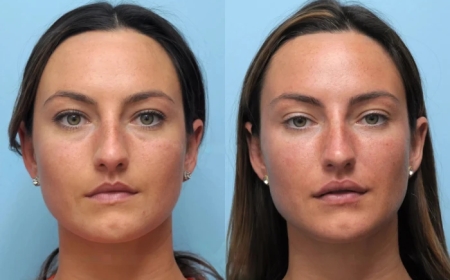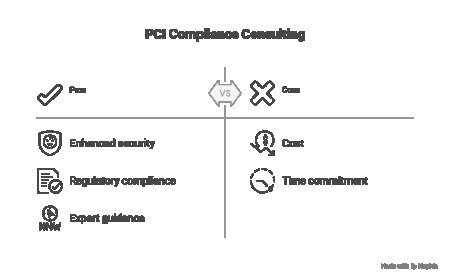How Long Should Raloxifene Be Taken to Prevent Breast Cancer?
Raloxifene is a medication primarily prescribed for postmenopausal women to help prevent osteoporosis and reduce the risk of invasive breast cancer.
Introduction
Raloxifene is a medication primarily prescribed for postmenopausal women to help prevent osteoporosis and reduce the risk of invasive breast cancer. Classified as a Selective Estrogen Receptor Modulator (SERM), it works by mimicking estrogen in some tissues while blocking its effects in otherssuch as breast tissue. For women at high risk of breast cancer, raloxifene offers a non-chemotherapy option for cancer risk reduction.
But a common question arises: How long should raloxifene be taken to prevent breast cancer? Is short-term use effective, or does it require long-term commitment to see significant benefits?
This article explores the optimal duration of raloxifene therapy, clinical trial findings, benefits and risks of extended use, and guidance for patients considering it for breast cancer prevention.
How Raloxifene Works
Raloxifene binds to estrogen receptors in the body. In bone, it acts like estrogen, helping to preserve bone density. In breast tissue, however, it acts as an estrogen blocker, reducing the hormonal stimulation that can lead to cancer development, particularly estrogen receptor-positive (ER+) breast cancers. You can also buy raloxifene from dosepharmacy.
Its dual action makes it a valuable tool in postmenopausal women who are at increased risk of both osteoporosis and breast cancer.
Who Should Consider Raloxifene?
Raloxifene is FDA-approved for:
-
Preventing and treating osteoporosis in postmenopausal women
-
Reducing the risk of invasive breast cancer in postmenopausal women with:
-
Osteoporosis, or
-
High risk of breast cancer (based on models like the Gail Risk Model)
-
It is not approved for premenopausal women or for the treatment of breast cancer.
Duration of Use: What the Research Says
The most comprehensive study on raloxifene and breast cancer prevention is the STAR trial (Study of Tamoxifen and Raloxifene), which compared the two medications in over 19,000 women.
? Key findings from the STAR trial:
-
Raloxifene reduced the risk of invasive breast cancer by about 38% compared to placebo.
-
The study duration was 5 years, and benefits were observed throughout this period.
-
After 5 years, protection declined if treatment was stopped.
Based on these results, most experts and guidelines recommend using raloxifene for 5 years when prescribed for breast cancer risk reduction. This duration provides the most evidence-based protection while minimizing potential long-term side effects.
Can Raloxifene Be Taken for More Than 5 Years?
While 5 years is the standard, some women and their doctors may consider extending treatment beyond this period, especially if the woman remains at high risk and tolerates the medication well.
However, data on extended use beyond 5 years for breast cancer prevention is limited. Continued therapy may offer ongoing protection, but it also comes with increased risks, such as:
-
Blood clots (deep vein thrombosis or pulmonary embolism)
-
Stroke risk (though rare)
-
Hot flashes or leg cramps
Decisions about longer use should involve a personalized risk-benefit assessment with a healthcare provider.
What Happens After Stopping Raloxifene?
Once raloxifene is discontinued, its protective effect gradually diminishes. Studies show that the risk of breast cancer begins to rise again, approaching the baseline risk level over time.
This does not mean that raloxifene use has no lasting benefitit may delay the onset of breast cancer or lower the cumulative risk over a lifetimebut long-term prevention appears to be tied to continued use.
Women who stop raloxifene after 5 years should continue regular breast cancer screenings, including mammograms and clinical exams, and consider alternative risk-reduction strategies.
Raloxifene vs. Tamoxifen: Duration Matters
Both tamoxifen and raloxifene are SERMs used to reduce breast cancer risk, but their usage patterns differ:
| Feature | Raloxifene | Tamoxifen |
|---|---|---|
| Used in | Postmenopausal women | Pre- and postmenopausal women |
| Standard duration | 5 years | 5 to 10 years (in treatment settings) |
| Breast cancer risk reduction | Yes (38% reduction) | Yes (similar or slightly higher reduction) |
| Uterine cancer risk | No increase | Slight increase |
Tamoxifen is often used for longer durations, particularly in women with breast cancer history or at very high risk, whereas raloxifene is generally limited to 5 years for prevention.
Monitoring During Raloxifene Use
Women on raloxifene should have regular follow-ups, including:
-
Annual physical exams
-
Breast exams and mammograms
-
Monitoring for signs of blood clots (e.g., leg swelling, chest pain)
-
Bone density testing if also used for osteoporosis
If any side effects occur, dose adjustments or discontinuation may be necessary.
Benefits of 5-Year Raloxifene Use
Taking raloxifene for 5 years has shown multiple benefits in clinical trials:
? Breast Cancer Risk Reduction
-
Effective for women with a Gail model 5-year risk score ?1.66%
-
Especially helpful for those with a strong family history
? Osteoporosis Prevention and Treatment
-
Increases bone mineral density
-
Reduces risk of vertebral fractures
? No Increased Risk of Endometrial Cancer
-
Unlike tamoxifen, raloxifene does not stimulate the uterus
Risks and Side Effects
Before starting raloxifene, women should be aware of possible side effects:
?? Common Side Effects:
-
Hot flashes
-
Leg cramps
-
Joint pain
?? Serious Risks:
-
Blood clots (especially in women with a history of DVT or PE)
-
Stroke (rare, mostly in women with other risk factors)
Women who smoke, are immobile for long periods, or have cardiovascular disease may be at higher risk of complications and may need alternative therapies.
Who Should Not Take Raloxifene Long-Term?
Raloxifene may not be appropriate for:
-
Premenopausal women
-
Women with a history of stroke, DVT, or PE
-
Women planning to become pregnant
-
Patients with severe liver disease
Always consult your doctor to evaluate personal risk factors.
For most postmenopausal women using raloxifene to prevent breast cancer, a5-year course is the recommended standard based on clinical evidence. This duration provides significant protection against invasive breast cancer, especially for women with a family history or high-risk profiles.
While some women may benefit from longer use, this decision should be made with a healthcare provider after considering the risks and benefits. After completing the course, continued screening and lifestyle modifications remain essential parts of ongoing breast health.
If you're considering raloxifene for breast cancer prevention, speak with your doctor to assess your individual risk and create a plan tailored to your health goals.






































